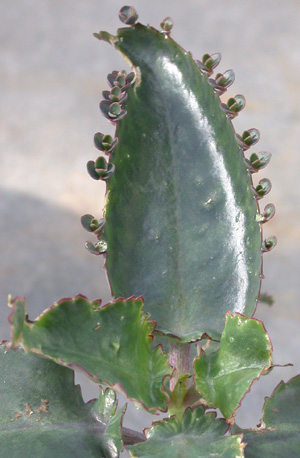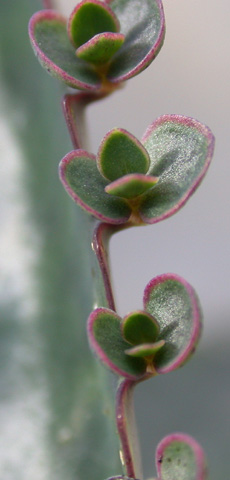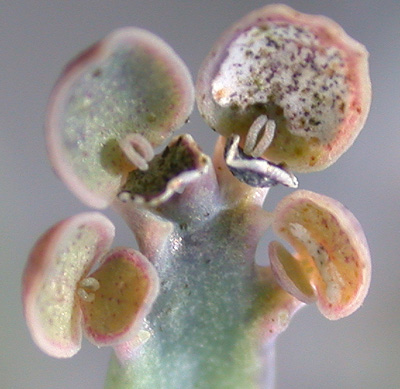VEGETATIVE REPRODUCTION
Vegetative (nonsexual) reproduction is widespread in plants. It is often accomplished without special modification of the plant organs. Stem sections and single leaves may grow roots and regenerate entire plants; rhizomes or roots are often able to sprout new shoots.
In some cases, however, vegetative reproduction is accomplished by unique modifications of certain organs, especially leaves. The leaves of some angiosperms (as well as some ferns) form plantlets at meristematic regions along their edges as a means of vegetative reproduction.
Kalanchoe (mother of thousands)
This plant produces little plantlets on the margins of the leaves.
Once the little shoot falls off and lands it will produce roots and become established as a little clone of its mother.
Bryophyllum
This plant also produces little plantlets.
REPRODUCTION
BACK TO MODIFICATIONS FRONTPAGE




